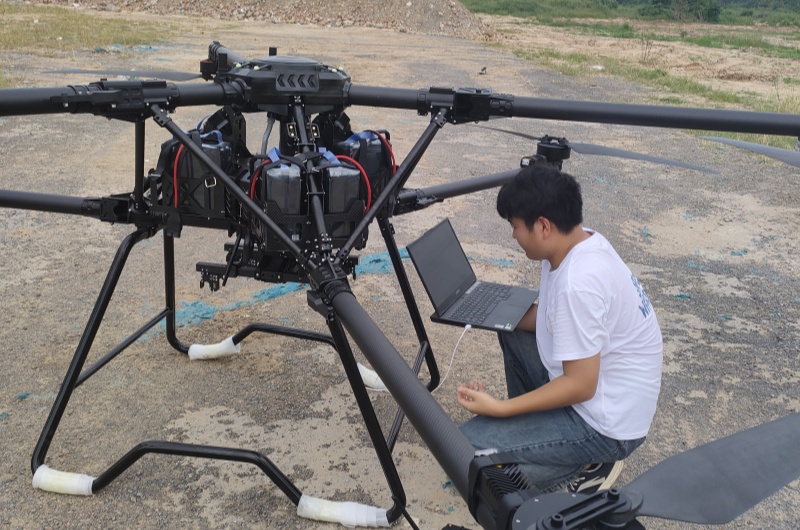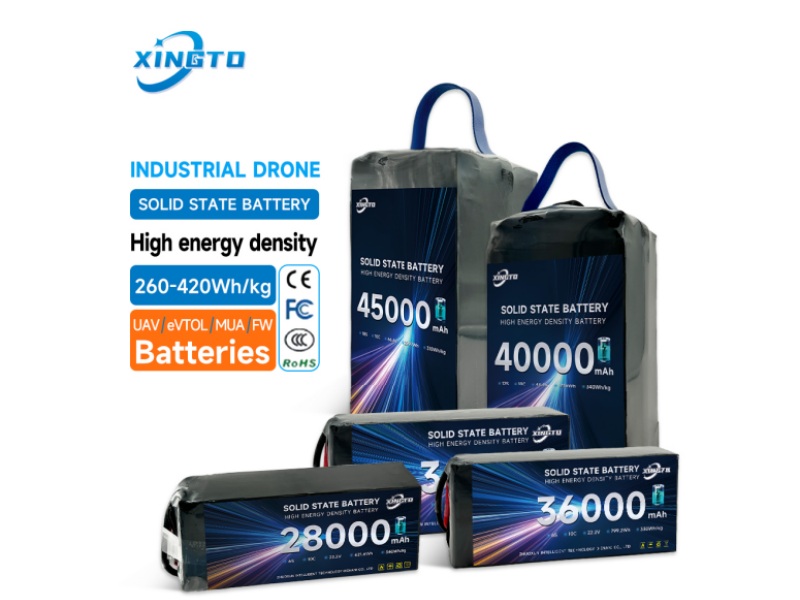Drone battery technology has undergone radical transformations since 2024, with innovations in energy density, safety, and longevity reshaping industrial and consumer applications. While the quest for extended flight time continues, the definition of "longest lasting" now encompasses total lifespan in charge cycles, resilience to extreme conditions, and adaptability to specialized missions. This article analyzes the latest advancements in drone batteries, with a focus on high-performance solutions like Xingto's 12S semi-solid-state packs, and provides a framework for selecting the optimal power source for your needs.

1. Redefining "Longest Lasting": Flight Time vs. Lifespan
The term "longest lasting" now spans two critical dimensions:
A. Single-Flight Endurance
- Standard Drones: Most consumer models achieve 25–47 minutes using 4S LiPo batteries.
- Industrial Drones: Heavy-lift UAVs leverage 12S Li-ion systems to reach 60 minutes in ideal conditions.
- Emerging Technologies: Solar-hybrid drones achieve weeks of non-stop flight but remain niche due to high costs.
B. Total Cycle Life
- Traditional LiPo: Degrades after 300–500 cycles, losing 20% capacity.
- Advanced Chemistries: Xingto's semi-solid-state batteries maintain >80% capacity after 800–1,000 cycles, doubling the lifespan of standard LiPos.

2. Key Battery Technologies Compared (2025)
The table below contrasts the dominant battery types for long-endurance drones:
| Battery Type | Energy Density | Cycle Life | Best For | Limitations |
|---|---|---|---|---|
| LiPo (Standard) | 100–200 Wh/kg | 300–500 cycles | FPV racing, agile filming | Swelling risk; short lifespan |
| Li-ion (High-Capacity) | 200–250 Wh/kg | 500–800 cycles | Industrial inspections, logistics | Heavy weight; slower discharge |
| Semi-Solid-State (Xingto) | 260–500 Wh/kg | 800–1,000 cycles | Agriculture, surveying | Higher upfront cost |
| Hybrid (Fuel + Battery) | 400+ Wh/kg | 1,200+ cycles | Military, disaster response | Complex maintenance; expensive |
Why Energy Density Matters: A 10% increase in Wh/kg can extend flight time by 15–20% for weight-sensitive drones.
3. Top Longest-Lasting Drones & Their Batteries
A. Top 3 Endurance Drones (2025)
JOUAV CW-30E:
- Battery: 12S Li-ion, 30,000mAh
- Flight Time: 60 minutes
- Use Case: Large-area mapping, pipeline monitoring.
Vanilla Aircraft VA001:
- Power Source: Diesel-hybrid
- Flight Time: 10hours
- Use Case: Scientific research, long-range surveillance.
DJI Matrice 300 RTK:
- Battery: 6S LiPo, 15,000mAh
- Flight Time: 55 minutes
- Use Case: Infrastructure inspection, public safety.
B. Rising Star: Xingto-Powered Drones
Xingto’s 12S battery series (18,000–90,000mAh) enables 2–4 hour flight times for mid-sized industrial drones. Key applications include:
- Agricultural Spraying: 30L payload capacity with 45-minute coverage per charge.
- Power Line Inspection: 50 km range using 34,000mAh packs.
4. Factors Determining Real-World Battery Longevity
Beyond specifications, these variables impact actual performance:
A. Environmental Conditions
- Temperature: LiPo efficiency drops 30% at -10°C, while Xingto’s semi-solid cells retain >90% capacity.
- Altitude: Thin air reduces propeller efficiency, increasing power draw by 10–15% at 3,000m.
B. Operational Practices
- Charging Habits: Balance charging at 1C preserves cell health vs. fast-charging at 2C.
- Storage: Storing batteries at 50% charge (3.8V/cell) slows degradation.
C. Payload and Flight Patterns
- Payload Impact: Adding 500g reduces flight time by 6–8 minutes for a 10kg drone.
- Flight Style: Aggressive maneuvering can cut battery life by 40% compared to steady cruising.
5. How to Choose the Right Long-Lasting Battery
Match your mission profile to battery characteristics:
A. For Maximum Flight Time
- Priority: Energy density > weight.
- Choose: Li-ion or semi-solid-state (e.g., Xingto 12S 37,000mAh for 260 Wh/kg).
B. For Long-Term Durability
- Priority: Cycle life > peak performance.
- Choose: Semi-solid-state batteries with 800+ cycles.
C. For Extreme Conditions
- Priority: Temperature resilience.
- Choose: Batteries with integrated BMS and -20°C to 60°C operating range.
6. The Future: Solid-State and AI-Optimized Batteries
Solid-State Batteries: Promising 500 Wh/kg by 2026, with zero risk of leakage or thermal runaway.
AI BMS: Xingto’s smart batteries adjust charging rates based on usage patterns, extending lifespan by 25%
The "longest lasting" drone battery in 2025 balances flight time, cycle life, and environmental adaptability. While traditional LiPo batteries suffice for short-duration tasks, industrial users should prioritize high-capacity Li-ion or semi-solid-state solutions like Xingto’s 12S series. By aligning battery choice with operational needs—and adhering to best practices in charging and storage—operators can maximize both flight duration and long-term value.




